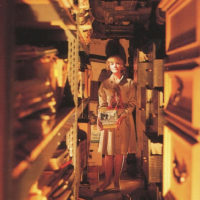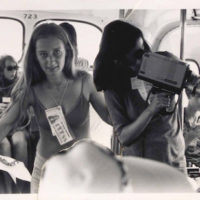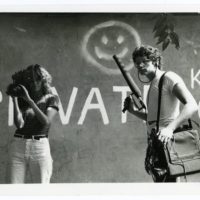
Looking Again at Eyes on the Prize
posted April 1, 2021
The civil rights era in the United States was a time of great upheaval, of continuing and at times intensified injustice, and of both triumph and tragedy. Now the Boston-based American Archive of Public Broadcasting (AAPB) has released a new online exhibit – Freedom Song: Interviews from Eyes on the Prize: America’s Civil Rights Years, 1954–1965 – that explores what went into making the groundbreaking 1987 television series, Eyes on the Prize, which famously depicted the era.

Hagley Library’s Collection Tells How Industry Worked
posted March 22, 2021
The range of fascinating pitches made in “industrial” films during the heyday of that sprawling genre is evident in the Cinecraft Production collection, which the Hagley Library in Wilmington, Delaware, has acquired and is now promoting. How were workers in the mid-20th century assured that capitalism and industrialism were wholesome forces? How did consumers in 1947 learn about the introduction of FM radio, and how the technology operated? If you were an industrialist, how did you tell members of the public about your industry, if otherwise word would likely never get out?

The Israel Film Archive, Online
posted March 5, 2021
What did the State of Israel look like at its founding in 1948? What ads ran on TV in 1970? What did vacationing on the seaside look like in 1968? Since the Israel Film Archive launched its new website in September 2020, it has attracted well over 500,000 visits from people interested in finding out. Visitors have also been able to stream feature films, there, and many other audiovisual recordings.

A Lifetime of Movie Research, Digitized
posted February 2, 2021
For decades, Lillian Michelson performed research in support of Hollywood film producers, directors, designers, and other creatives. With material she gathered in the course of her work, in 1969 she began the Cinema Research Library that now bears her name. A new chapter in the vast collection has begun with Michelson’s donation of the material to the Internet Archive.

Kartemquin’s Archive in Good Hands
posted December 28, 2020
The award-winning Kartemquin Films, a leading American producer of social justice-related films, has been keeping its archive in a storage facility for three decades, but now is celebrating its placement of the collection with the film archive at Washington University in St. Louis, Missouri.
What COVID-19 Means for Moving Image Archiving
posted December 8, 2020
“One of the most remarkable ripple effects of the 2020 COVID-19 crisis is the blurring in the public perception of the distinction between natural and human-made disasters,” and this has implications for film preservation, writes Paolo Cherchi Usai in a keynote article of a special COVID-themed issue of FIAF’s Journal of Film Preservation.

Eastman’s South Asian Treasure Trove
posted November 6, 2020
Thanks to a substantial grant from the Institute of Museum and Library Services, the George Eastman Museum is hard at work restoring an unusual collection of films from South Asia. The grant was made through the IMLS Museums for America grant program. Eastman is using it to restore 1,285 Indian and Pakistani film prints. Archivists there believe their collection to be largest of its kind outside India.

47 Orphan Films To Be Preserved with Federal Grants
posted October 1, 2020
The National Film Preservation Foundation has announced annual grants to U.S. 34 institutions to allow them to preserve 47 “orphan” films from their collections. (“Orphan film” is defined as a film in any form that has been abandoned by its owner or caretaker.) Since 1998 the NFPF has provided preservation resources to 315 organizations in all 50 American states as well as the District of Columbia and Puerto Rico to help save 2,547 films.

The Total Television Guerrillas Who Upturned Conventions
posted September 30, 2020
There once was a time when cellphones didn’t capture just about everything that happens in public. Until the 1970s, filming for broadcast was generally constrained, for starters, by the size and weight of cameras. TV cameras and their tape setups, shackled to power sources, were the size of half a car. Then along came the Sony Portapak video camera, and the pioneers of "guerrilla tv."

Digitizing the First Days of Public Access Television
posted September 2, 2020
Public access to free-to-air and cable television resulted from a lot of activism by pioneers in the face of many obstacles. From 1971, the plucky New York state collective, Portable Channel, created some of the earliest citizen-made documentary television in the United States. Now Visual Studies Workshop, based in Rochester, NY, is digitizing and making available hundreds of video tapes created by members of Portable Channel.
